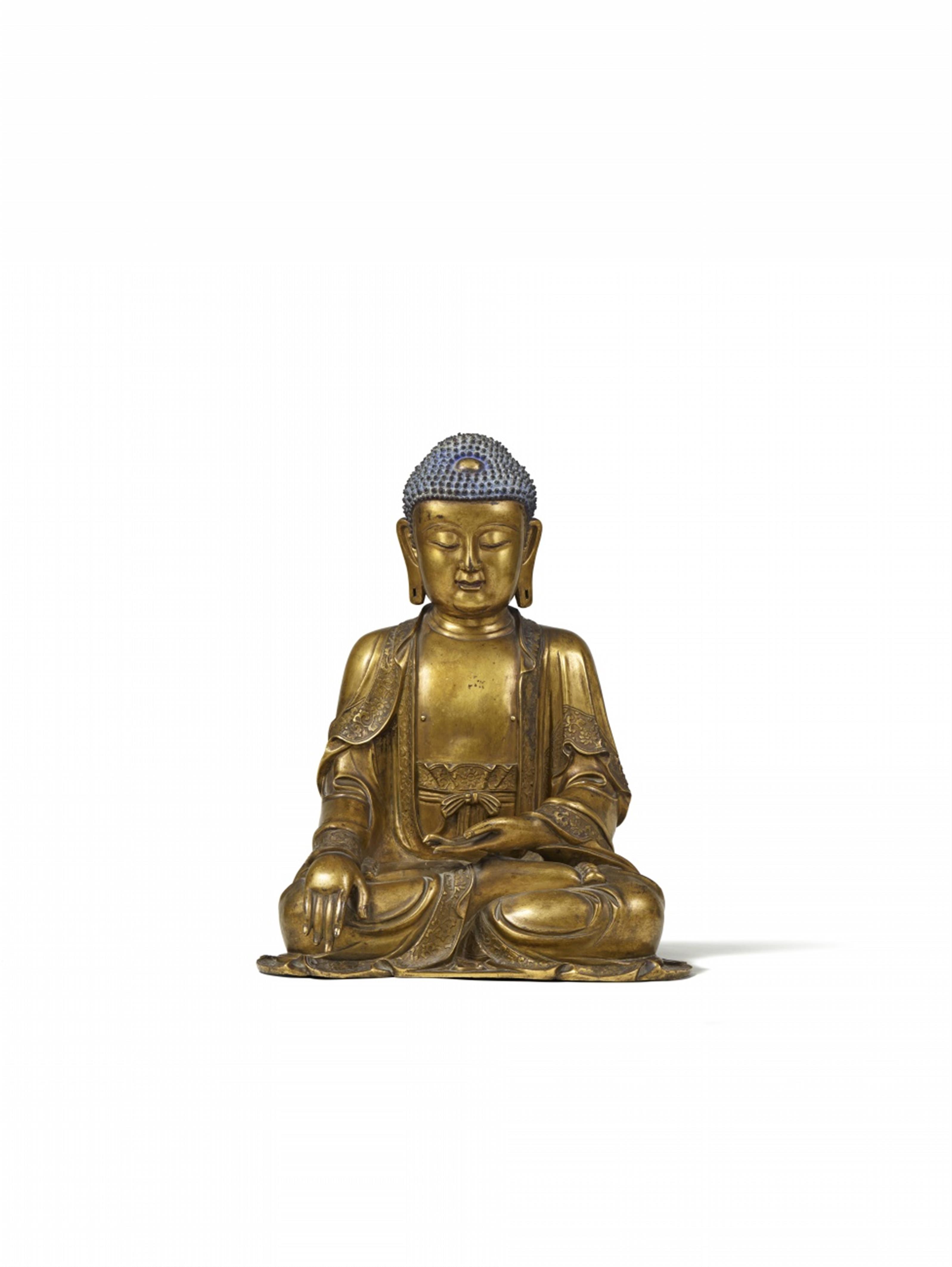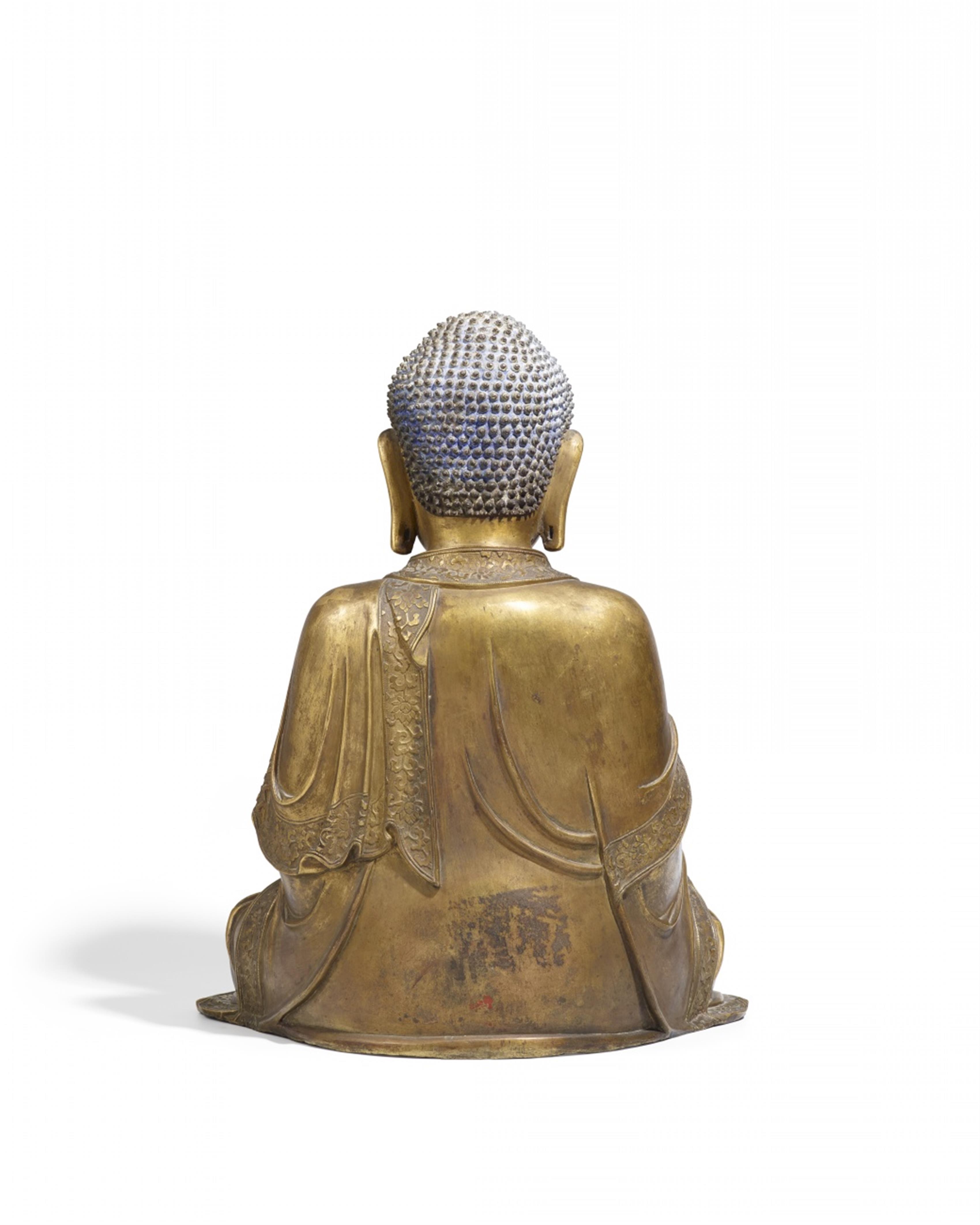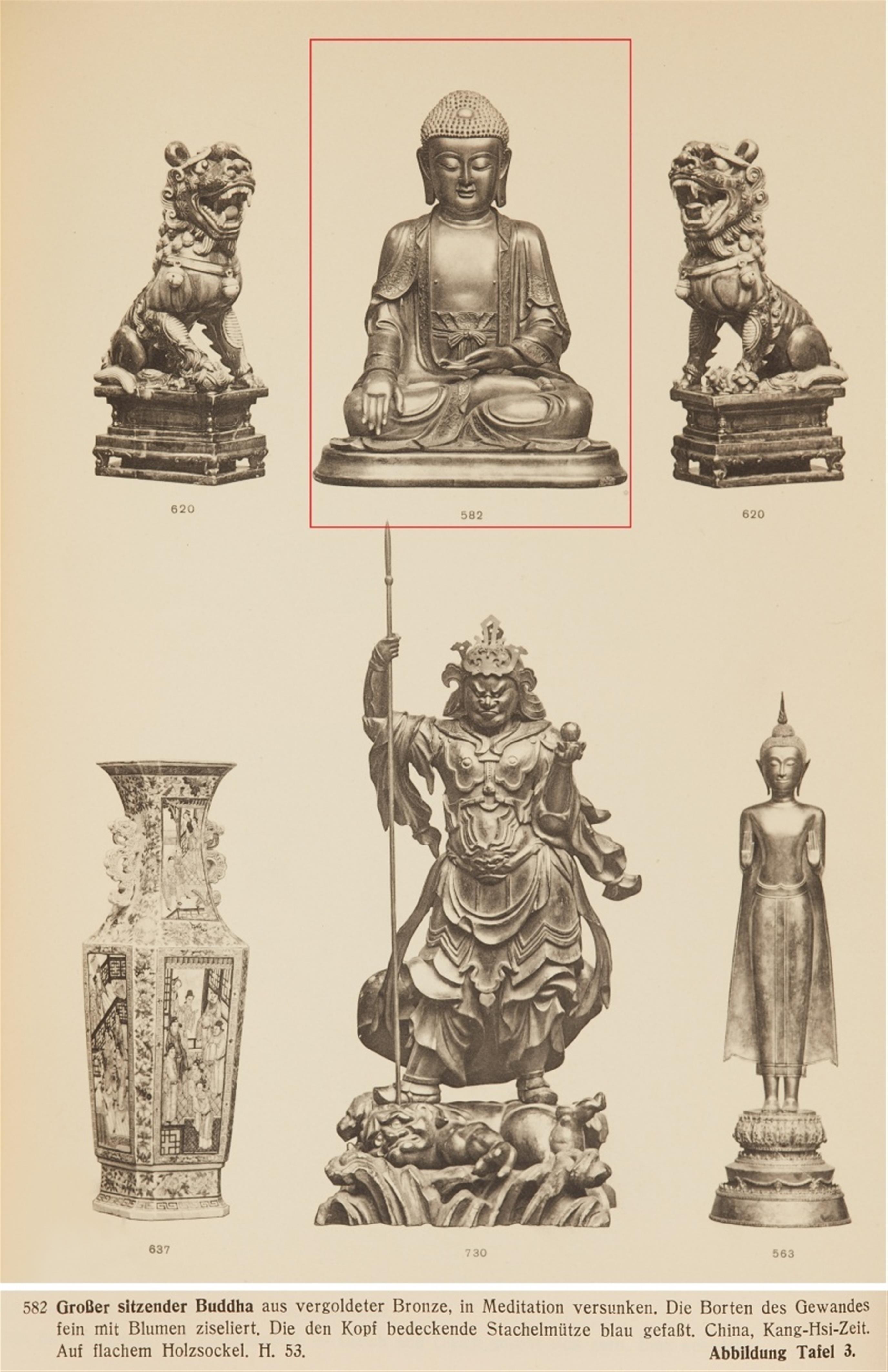A large gilt bronze figure of Buddha Shakyamuni. Ming dynasty, 17th century
Seated in meditation, the right hand in bhumisparsa mudra, the left hand in dhyana mudra above the feet, a gilt urna in front of the ushnisha and reserved from the small hair curls originally painted blue, the garment border decorated with large lotus flowers and leafy scrolls in relief. European wooden stand painted to imitate bronze.
Height 50 cm
The former owner, an industrialist with a factory in the lower Rhine area, amassed a large collection of paintings, drawings, prints and porcelains in the 1920s and 1930s. He mainly bought in the Rhineland, especially from Walter Bornheim and at Lempertz. As it was popular at the time, he also bought objects from the Near and Far East. This extraordinary beautiful Buddha Shakyamuni was bought at Lempertz in Cologne on 11./12. December 1931 as Lot 5xx. After the death of his widow part of the collection was sold though auction, the other part remained in the family, now to be consigned by one of the grandsons of the collector.
The simple garment covering both shoulders, the complete lack of jewellery and the hands held in the mudra of meditation (dhyana) are the identifying characteristics of Buddha Shakyamuni. The current figure is represented in the pure Han-Chinese style, without any iconographic or stylistic influence of the Tantric or Tibetan Buddhism prevalent at the imperial court from the Kangxi era onward. A rare example of a dated figure of Guanyin similar in style to the current Shakyamuni and dated by inscription to the year 1660 shows that the Ming style continued into the early years of the Qing dynasty (Sotheby's Hong Kong, 8.4.2014, lot 88).
Such Buddhist bronze sculptures were generally donated to a Buddhist temple by private persons. They were placed on the large wooden altar, which displayed the main figures of worship, usually a triad of Buddhas or Bodhisattvas. To the sides and in front of them smaller Buddhist figures were randomly arranged. As objects of worship they were sometimes donned with a cloth placed around their shoulders.
The current bronze sculpture is an extraordinary fine example of bronze casting of the late Ming dynasty. The Buddha's face features express spiritual serenity. The hair curls with remains of their lapis lazuli blue colouring evenly cover the head and ushnisha while the large domed urna reserved from the curls is accentuated by gilding. The ornamental borders of the garments consist of lotus flowers and leafy scrolls. They are rendered not as usual in engraving, but in relief giving the impression of precious brocade.
明十七世紀 銅鎏金釋迦牟尼坐像
來源:德國科隆倫佩茨拍賣,1931年12月11日,編號582,圖版3
萊茵河地區私人收藏,此後家族傳承
收藏者是來自萊茵河下游的工業家。他在二十世紀二三十年代收藏了很多藝術品,其中也包括亞洲藝術品。
他在萊茵地區或者從科隆的瓦爾特·博爾恩海姆和倫佩茨處購買藏品。在其逝世后,他的藏品一部分被其遺孀出售,一部分則被他兒子所繼承。這個令人印象深刻的釋迦牟尼佛像就來自他的一個孫子,並於1931年12月11或12日在倫佩茨拍賣行被拍賣。
Provenance
Lempertz, Cologne, 11.12.1931, lot 582, plate 3
Private collection, Rhineland and thence by descent






